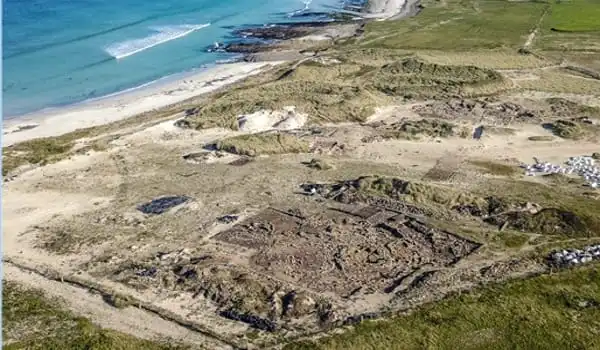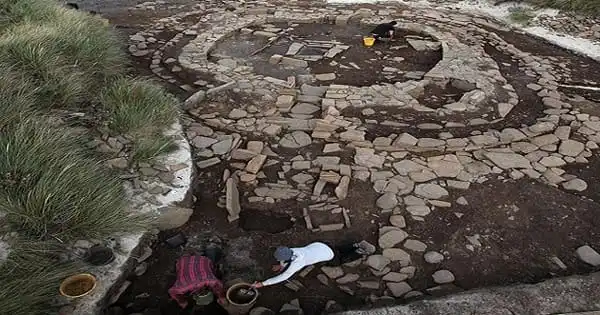A huge number of European women farmers who arrived in Orkney some 5,200 years ago nearly wiped out the DNA of the local female population. That is the discovery of an ancient DNA profiling experiment conducted by the universities of Edinburgh and Huddersfield.
An international team lead by experts at the University of Huddersfield utilized ancient DNA to rewrite the history of the Orkney islands, demonstrating that large-scale immigration replaced much of the original population during the Early Bronze Age.
The study, which used DNA extracted from human remains discovered on Westray, discovered that within 1,000 years, the genes of the initial inhabitants can only be found in a limited percentage of the female population. In layman’s words, the women who came had offspring with the male locals, thereby eradicating the local female population. The Indo-European speaking ladies who were among the first visitors to the islands were most likely from the Black Sea region.
The project was a close collaboration between genetic researchers in Huddersfield and Edinburgh, coordinated by Professor Martin Richards and Dr. Ceiridwen Edwards, and Orkney-based archaeologists.
This discovery reveals how much we still have to learn about one of the most monumental events in European prehistory, how the Neolithic came to an end
Professor Martin Richards
Orkney is well-known for its archaeological treasures. It was a tremendously prominent cultural center around 5000 years ago, during the Neolithic period, when farming first took root. It has been dubbed “Britain’s ancient capital” because of its many well preserved stone homes, temples, and megalithic monuments, as well as a ceramic style that appears to have spread across Britain and Ireland.
However, as Europe progressed into the Bronze Age over the next thousand years, it was largely assumed that Orkney fell behind. Its power waned, and the islands grew more isolated. However, because there were fewer archaeological remains to investigate, far less was known about this period.
By integrating archaeology with the analysis of ancient DNA from Bronze Age human remains from the Links of Noltland site on the remote northern island of Westray, researchers now know considerably more about this historical period than ever before, and the results have surprised both geneticists and archaeologists.

To begin, despite its alleged isolation, the team has demonstrated that Orkney saw wide-scale immigration during the Early Bronze Age, which replaced a major portion of the indigenous population. The newcomers were likely the first to speak Indo-European languages, and their genetic ancestors were derived in part from pastoralists living on the steppe territories north of the Black Sea.
This mirrored what was happening in the rest of Britain and Europe in the third millennium BC. But the researchers found a fascinating difference that makes Orkney highly distinctive.
Most of Europe’s pastoralist expansion on the eve of the Bronze Age was primarily led by men, with women pulled into the rising populations from local farming groups. The researchers in Orkney, on the other hand, discovered the polar opposite. The arrivals to the Bronze Age were mostly women, but male lineages from the original Neolithic population lasted for at least another thousand years – something never seen before. These Neolithic lineages, however, were supplanted by the Iron Age and are now extinct.
But what made Orkney so unique? Dr. Graeme Wilson and Hazel Moore of Orkney-based EASE Archaeology, who investigated the Links of Noltland, claim that the solution may lay in the long-term stability and self-sufficiency of farmsteads on Orkney, which genetic research suggests were already male dominated by the pinnacle of the Neolithic. When a Europe-wide recession struck near the end of the Neolithic, they may have been ideally positioned to withstand the storm and keep their hold on the population when immigrants arrived.
This means that Orkney was far less isolated than previously supposed, and that there was a long period of negotiation between local males and newcomers from the south, spanning several generations.
“This demonstrates that the third-millennium BC spread across Europe was not a monolithic process, but was more nuanced and varied from place to place,” said Dr George Foody of the University of Huddersfield, one of the project’s principal researchers.
The findings surprised both the archaeologists and geneticists on the team, but for opposite reasons: the archaeologists did not expect such large-scale immigration, whilst the geneticists did not expect the Neolithic male lineages to survive.
“This discovery reveals how much we still have to learn about one of the most monumental events in European prehistory — how the Neolithic came to an end,” said Professor Martin Richards, Director of the University’s Evolutionary Genomics Research Centre.





